Got a question?
Check out our most commonly asked questions below. Please get in touch if your question is not included.
Who is Maui?
Maui is a Maori God, also known as Maui-tikitiki-a-Taranga. He performed a number of major feats which you will learn about on the tour.
What do each of the 9 carvings represent?
In 1999 Toihoukura, the arts department of the Tairawhiti Polytechnic, under the tutelage of Derek Lardelli, was commissioned by Te Runanga o Ngati Porou to produce a set of carvings that would be installed on Hikurangi to commemorate the dawning of the new millennium in the year 2000. The installation, entitled “Maui Whakairo”, is made up of eight carved pou (free-standing sculptures) arranged in a circle around the central feature piece of Maui-tikitiki-a-Taranga.
Maui has been made the focus of this installation because of his importance to Ngati Porou as a founding ancestor of the tribe. The carvings that make up the installation all relate to Maui and his whanau (family) and to some of the stories told about him.
A brief description of each of the carvings follows, however, it should be kept in mind that each one comprises many elements which space and time will not allow us to describe in detail here. Please come and join us on an experience to find out more.
Maui-tikitiki-a-Taranga: The centre piece of the collection. Maui was destined to be someone very different from the norm who would achieve extraordinary feats.
Te Waha-o-Ruaumoko: Is the entrance way into “Te Ana-o-Muriranga-whenua”, “the cave of Muriranga-whenua”, wherein was contained the knowledge of all things that Maui sought to learn and possess.
Hine-rau-ma-ukuuku: Was Maui’s wife, or at least one of Maui’s wives. This carving faces outward while all the other carvings face inward towards Maui. Hinerau has the responsibility of kaikaranga (the voice of welcome) to all manuhiri (visitors).
Te Kauae-o-Muriranga-whenua: Is “the jawbone of Muriranga-whenua’” which Maui used as a hook to catch his prized fish.
Te Tohu a Maui: “Te Waka-o-Ranginui” gathers the tears of Ranginui (rain), Hineruru or “Te Kohanga-manu”, is the kaitiaki that embraces “Te Puna-o-Tinirau” that collects the tears.
Te Taurapa-o-Nukutaimemeha: Is “the stern or tail-piece” of Maui’s waka, Nukutaimemeha, which lies in a petrified form in the lake Takawhiti on the summit of Hikurangi. The carving faces the west and symbolises the connection of all maunga (mountains) in the direction of Hikurangi to Taranaki. It also contains the figure “Whakataupotiki”, the guardian figure of Maui.
Irawhaaki: Was Maui’s father. In other versions of the Maui stories he was also known as Makeatutara. It was Irawhaaki’s mistake in performing karakia upon Maui that was to render him mortal and lead to his ultimate demise at the hands of Hinenui-te-po, the goddess of the spiritual realm.
Te Hiku-o-te-Ika: Is “the barb of the stingray” and refers to the tail-end of the fish (in some versions it was a stingray), establishing a connection to the people of the north, the tailend of the stingray. This carving also incorporates Hinenui-te-po and “Te tatau o te po — the gateway to the spirit world”, which is accessed through Te Hiku-o-te-ika at a place called Te Rerenga Wairua, more commonly known now as Cape Reinga in Northland. It also contains Te Umukokako, where Hikurangi wairua (spirits) gather.
Te Waka Hoehoe: or Matawaka, refers to all waka and waka traditions representing ancestors of iwi and hapu of Te Tairawhiti — Horouta, Mangarara, Nukutere, Te Ikaroa-a-Rauru, Tauira-mai-tawhiti, Tohora, Tereanini, Takitimu, Tamira, Hotutaihirangi, Tai-o-puapua, Te Rarotuamaheni, raiteuru and others. Nukutaimemeha, however, being the principal waka.
Are we allowed up the Maunga unguided?
Te Ara ki Hikurangi is the public walking track, however permission should be sought from Te Runanganui o Ngati Porou as they administer the farm (Pakihiroa Station) at the base of the Hikurangi through which access to the mountain is obtained. Email info@maungahikurangi.com
We encourage all visitors to consider a guided experience, the chance to hear the history and stories of the maunga are a once in a lifetime opportunity. There is no information about the carvings or the Maunga at the Summit.
Can I drive my own 4 wheeled drive up?
No, Pakihiroa Station is a working farm therefore you are unable to access the 4 wheel track without permission. Maunga Hikurangi Experiences is the only operator with permission to access.
Am I allowed to take photos?
Yes you are. You are welcome to take as many photos as you like at the carvings and the guides will be happy to help. If it is safe to do so, you are able to take photos on your journey up and down the maunga, however you are unable to take photos of people working on the farm. You must obtain written permission from Te Runanganui o Ngati Porou if you are planning to use imagery for publications or commercial purposes.
Do you have guides that speak other languages?
At this stage we have guides who speak English & Te Reo Maori. If you require a guide to speak Te Reo Maori please request at time of booking.
Can I buy food and drink on the tour?
We begin and end our tours at Hati Nati cafe. As part of the experience you will be provided with a light snack showcasing Ngati Porou produce.
Maunga Hikurangi closures
From time to time, Te Ara ki Hikurangi Maunga (the Hikurangi Mountain track) is closed to the public due to farming operations, Ngāti Porou Cultural Events and more recently, the impacts of COVID-19.
Our tour schedule will be updated shortly so please check back with us soon.
Confirmed annual closure dates are:
- CLOSED: For the whole month of October 2023 – closed for lambing season

